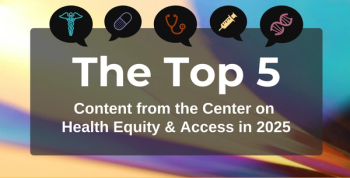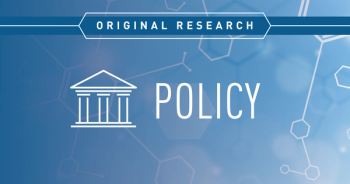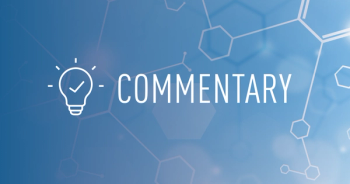
Population Health, Equity & Outcomes
- June 2025
- Volume 31
- Issue Spec. No. 6
- Pages: SP337-SP350
Risk Factors for Financial Toxicity in Health Care
Risk factors for financial toxicity in a nationally representative survey included involuntary unemployment, transient loss of health insurance, and high-deductible health plans.
ABSTRACT
Objectives: Financial toxicity (FT) represents the impact of health care expenses on patients’ financial well-being and access to care. Although existing literature has mostly looked at FT in the context of cancer and other medical conditions, we sought to identify risk factors for FT on a population-wide level.
Study Design: This was a cross-sectional study of the 2022 National Health Interview Survey (NHIS).
Methods: Eight financial hardship questions were selected from the 2022 NHIS to represent FT. The unweighted sum of financial hardship questions to which a person responded “yes” was calculated as the FT score (FinTox), and risk factors for FinTox were analyzed using a negative binomial model.
Results: There were 27,246 adults with a mean age of 52.96 years included for analysis, among whom 17.1% (n = 4659) responded “yes” to at least 1 FT question, of whom most had a FinTox of 1 or 2 (n = 3112; 66.8%). Increasing age (β = –0.616; P = .020), higher education (β = –1.08; P = .023), and higher income (β = –0.149; P < .001) were associated with lower FinTox, whereas involuntary unemployment (β = 0.920; P = .001), transient loss of health insurance (β = 1.075; P = .044), and high-deductible health plans (β = 0.519; P = .013) were associated with higher FinTox.
Conclusions: Understanding risk factors for FT at a population level can help identify patients at risk for catastrophic financial effects or inadequate access to care.
Am J Manag Care. 2025;31(Spec. No. 6):SP337-SP350.
Although health care spending in the US is traditionally considered in the context of national expenditures, individual patients also bear financial burdens.1 According to a 2022 KFF survey, 47% of adults in the US report that it is “very or somewhat difficult” to afford their health care costs, and that statistic increases to 69% among families with an annual income below $40,000.2 Financial toxicity (FT) is a term that represents both the objective financial burden of health care spending and the subjective financial distress experienced by an individual. The term was first used to describe the financial impacts of cancer care on patients to emphasize that health care spending imparts similarly toxic effects as the chemotherapy, radiation, and surgery used to treat cancer. This toxicity, like the physical toxicity from therapeutics, can diminish quality of life and interfere with future care.3,4 Over the years, researchers have expanded analyses of FT beyond oncology to encompass patients with cardiovascular disease,5 chronic gastrointestinal disorders,6,7 benign hematologic disorders,8 and traumatic injury,9,10 among others. Within these studies, FT has been defined using various measures. When using administrative or claims data, FT is typically measured using objective metrics, including out-of-pocket costs or measures of catastrophic health care spending (ie, out-of-pocket spending > 40% of postsubsistence income).7,11 However, when more granular data such as those from institutional databases are analyzed, patient-reported outcomes are typically used.12 Compared with isolated cost data, analyses of FT offer a broader and more patient-centered view of the impact of rising health care costs. Despite the recent explosion in FT literature, most prior studies examined FT in 1 or a few disease states rather than in a generalized population. Given this gap in the literature, the main objective of this study was to quantify risk factors for subjective FT on a population level, which is important because health care costs likely affect many people even without significant diagnoses. Knowledge of risk factors for FT within the general population is helpful in that it provides an understanding on which to base interventions aimed at identifying and mitigating FT before the development of costly health care needs.
Health insurance is designed in part to protect against FT, and prior work on the effect of health insurance on FT examines coverage in broad terms of the presence or absence of insurance coverage.11,13,14 However, health plans in the US are heterogeneous, and cost sharing can represent a significant barrier to their protective effect. One previous survey indicated that 23% of respondents with private insurance plans reported spending more than a quarter of their monthly budget on health care, and 21% of respondents either dropped or considered dropping their plan in the past year due to cost.15 As such, this study also sought to expand upon previous findings that insurance coverage is protective against FT by examining specific aspects of insurance coverage and cost.
METHODS
Data Source and Population
The National Health Interview Survey (NHIS) is an annual, nationally representative, cross-sectional survey of approximately 27,000 noninstitutionalized adult civilians that is intended to monitor health trends in the US.16 We identified 8 financial hardship questions that represent aspects of FT and included all adult survey respondents from 2022 who answered all 8 of the selected financial hardship questions. The Boston Medical Center – Brighton Institutional Review Board did not require review because this study used deidentified, publicly available data.
Variables
We created an FT score (FinTox) by assigning 1 point for each financial hardship question to which an individual responded “yes” and summing all points to obtain a final score. FinTox was modeled against risk factor variables that included sociodemographic factors, chronic clinical conditions, and variables reflecting a person’s insurance coverage and level of cost sharing. The sociodemographic variables encompassed age, sex, race, ethnicity, region, urban/rural classification, education level, employment status, and income. We stratified unemployment into voluntary and involuntary unemployment. Voluntary unemployment was defined as participating in seasonal work, retirement, pursuing formal education, caring for the home, or working at a family-owned business without pay; involuntary unemployment covered those seeking work. Urban/rural classification was determined according to the National Center for Health Statistics Urban-Rural Classification Scheme on a county level.17 Income is reported as percentage of the federal poverty level (FPL), which for 2022 was $13,590 for individuals and $27,750 for a family of 4.18 Given the complex relationships among age, Medicare insurance, and FT, we analyzed age both as a continuous variable and as a binary variable ( < 65 years vs > 65 years). The clinical conditions included were hypertension, dyslipidemia, coronary artery disease, previous myocardial infarction, stroke, cancer, diabetes, chronic obstructive pulmonary disease, and obesity. Hospitalizations
and emergency department visits within the past
year were also collected.
To study insurance coverage, we included coverage status and any lapse in coverage over the prior year if the respondent was covered at the time of the survey. The latter variable captures intermittent vulnerability that may result in FT. We also included cost-sharing variables such as enrollment in a high-deductible health plan (HDHP), defined by the Internal Revenue Service in 2022 as a deductible greater than $1400 per individual,19 and monthly premiums.
Statistical Analysis
Data are expressed as a number with percent for all categorical variables and mean (SD) for all continuous variables. Pearson χ2 tests were used to compare the proportion of respondents who answered “yes” to at least 1 financial hardship question. The Mann-Whitney U rank sum test, the Kruskal-Wallis test by ranks,
and the Spearman rank sum correlation tests were used to compare the ordinal FinTox, where appropriate. All risk factor variables that achieved a level of significance with P < .2 on univariate analysis were included in a negative binomial model with a stepwise approach to arrive at the final model. A negative binomial model was selected due to overdispersion of the data, but a zero-inflated model was not necessary because the logit predicting excess zeros did not demonstrate zero inflation. Two-sided tests with a P < .05 were significant. All statistical analyses were performed using Stata version 14.2 (StataCorp), accounting for complex survey design.
RESULTS
Cohort characteristics are displayed in Table 1. A total of 4659 (17.1%) individuals responded “yes” to at least 1 financial hardship question (Table 2). Among those, 34.3% of individuals had a FinTox of 1, and 2.1% had the maximum FinTox of 8. A complete breakdown of the absolute frequency of each FinTox can be found in the Figure. The financial hardship question with the highest frequency of “yes” responses was, “In the past 12 months, did you have problems paying or were you unable to pay any medical bills?” (9.8%). The least frequently experienced financial hardship question was question 3, which asked about skipping medication to save money (2.5%) (Table 2).
On univariate analysis, individuals with FT were less frequently older than 65 years (21.7% vs 34.1%; P< .001), male (41.0% vs 46.5%; P< .001), and White (70.2% vs 75.1%; P< .001). Those with FT were more frequently Hispanic (19.5% vs 13.1%; P < .001) and less frequently had attained a college degree or higher (40.2% vs 53.2%; P < .001). Although employment status was not different between the 2 groups, involuntary unemployment was more common in the FT group than the non-FT group (14.9% vs 6.1%; P <.001) (Table 3). Survey respondents with FT were less commonly insured (82.2% vs 92.7%; P <.001), more frequently had a lapse of coverage over the previous year (7.4% vs 2.0%; P < .001), and more frequently had Medicaid coverage (13.1% vs 9.4%; P < .001). Although premium cost was not associated with FT (mean $4161 vs $4271; P = .199), individuals with FT were more likely to have an HDHP (20.0% vs 18.2%; P < .001) (Table 3). Finally, individuals with FT were less likely to have a prior cancer diagnosis than those without FT (10.7% vs 12.8%; P = .002) (Table 3).
In the multivariable model, higher body mass index (BMI) (β = 0.702; P = .001), HDHP (β = 0.519; P = .013), lapse in insurance coverage over the past year (β = 1.075; P = .044), and involuntary unemployment (β = 0.920; P = .001) were all associated with higher FinTox. However, age older than 65 years (β = –0.616; P = .02), higher education level (β = –0.108; P = .023), prior cancer diagnosis (β = –0.625; P = .022), and higher income (β = –0.149; P < .001) were associated with lower FinTox (Table 4).
Subgroup Analysis of Cancer History
Most of the cohort was younger than 65 years (18,523; 68.1%). Age older than 65 years was protective against a higher FinTox (β = –0.616; P = .02). Most of the survey participants with a self-reported cancer history were older than 65 years (68.7%), and respondents older than 65 years made up a greater proportion of those with cancer than those without cancer (68.7% vs 26.7%; P < .001). Among individuals older than 65 years, there was an insignificant trend toward a lower rate of FT among individuals with cancer (24.9% vs 27.0%; P = .372). However, among those younger than 65 years, there was a significant association between cancer and FT (6.7% vs 5.5%; P = .013).
DISCUSSION
The results of this cross-sectional analysis of risk factors for FT in the general population highlight that any lapses in insurance and HDHP coverage are insurance factors associated with FT. Additionally, high socioeconomic status and age past Medicare eligibility were protective against significant FT. These findings can be explained by the interplay between the health and wealth of adults throughout the life cycle. As younger adults enter the workforce, low health care needs are matched with relatively low income and savings. Thus, one would expect that average younger adults have low FinTox. As adults age into their 50s and 60s, health care expenditures typically increase, but so do income and savings, buffered by insurance that is often tied to employment. Health care expenditures usually continue to increase as adults reach age 65 years, when they qualify for Medicare and receive health insurance with lower out-of-pocket costs (eAppendix [
Although the broad presence of insurance coverage was not associated with FT, lapse in coverage over the previous year was associated with increased FinTox scores. Individuals with known health conditions are more likely to have health coverage to supplement their recurrent health care costs, whereas those without known health conditions and no anticipation of near-term health care needs are less likely to have health coverage. Given the nature of our sample being reflective of the general population, the comparison between those with and without present insurance coverage likely partially reflects the difference in baseline health status. In contrast, those with lapsed coverage may reflect individuals who desire insurance and thus reflect a similar risk profile as those who maintained insurance throughout the year. We believe this finding implies that efforts to minimize interruptions in insurance may lessen FT.
High premiums were not associated with FT. We hypothesized that wealthy individuals may be more likely to purchase plans with extensive coverage and higher premium costs, which spread health insurance costs in a predictable way and avoid costly care episodes. The incentive for higher-premium plans among wealthy individuals is compounded by the tax shield these premiums often provide. In a report by Kaestner and Lubotsky, the authors found a much higher average premium ($10,000) for those in the highest 2 income deciles than that of the lowest 2 income deciles (less than $1000).23 In contrast, HDHPs were associated with higher FinTox. HDHPs are a way of self-selecting into a low-cost plan at the expense of high downside risk if a person incurs significant health expenses, but they may also reflect a need for low premiums due to low income. We believe that this unanticipated downside risk contributes significantly to FT, which more frequently stems from acute health care needs than from chronic conditions. According to a KFF/New York Times medical bills survey, 66% of issues related to medical bill payment stemmed from acute health care utilization as opposed to bills that built up over time.24 Interestingly, attempts to improve access to low-deductible plans through premium tax credits have not had a reliable impact on catastrophic spending and FT.25,26
Factors associated with higher socioeconomic status were protective against higher FinTox. Higher income was protective against FT in our model, further confirming the known multidirectional association between wealth and health. The corollary to this finding adds to the understanding that low-income, working-age adults represent a high-risk group that could benefit significantly from improved insurance coverage, which is confirmed by findings that insurance expansion through the Affordable Care Act insurance marketplace and Medicaid expansion had the greatest impact on low-income individuals.20 A higher ultimate level of formal education was also protective against FT, which may indicate that formal education is a surrogate for wealth, but may also represent a more complex interaction among education, health literacy, and better health care utilization. Other investigators have studied this topic and found that higher levels of formal education were associated with higher utilization of preventive services, which reduces unexpected health events and associated costs.27
Although current employment status was not associated with FT, involuntary unemployment was associated with higher FinTox. This distinction is important because unemployment does not induce uniform effects on individuals and families, given the myriad reasons for unemployment. Voluntary unemployment is typically associated with socioeconomic privilege, such as retirement, running a family-owned business, engaging primarily in volunteer work, and pursuing additional education.
A self-reported diagnosis of cancer was protective against FT, which is surprising because prior studies have reported FT in anywhere from 17% to 65% of patients with cancer. As discussed in the subgroup analysis, the relationship between age and cancer may explain this discrepancy since age offers protection against FT and cancer is generally a disease of older individuals. In a study using patient-reported FinTox from cancer survivors, Ver Hoeve et al found a lower rate of FT than similar contemporary studies involving patients currently treated for cancer, and similarly hypothesized that this may have been confounded by age.28 Also critical to the discussion of cancer is timing of diagnosis, treatment, and potential cure, which were not available in this data set. Finally, this study shows that a higher BMI is associated with higher FinTox independent of chronic conditions typically associated with obesity, such as diabetes, dyslipidemia, and hypertension. This suggests that the socioeconomic constructs that frame obesity within society are more likely responsible for this association than the medical consequences of obesity. For example, previous studies have demonstrated that individuals with obesity experience wage and hiring bias, which affect FT.29,30 Additionally, although socioeconomic disadvantage was associated with FT in this study, it has also been linked with obesity through food insecurity and poor nutrition associated with cheap and convenient food options.31 As such, there may be an association of obesity and FT through socioeconomic factors, but further study is warranted to explore this association.
The potential vulnerabilities uncovered from this cross-sectional study reveal areas for future investigation. For clinical practices, implementation of FT screening based on these identified risk factors for FinTox may identify patients in need of assistance, as health care costs are often not considered in an evidence-based manner during clinical interactions.32 Although this study focused on patient-level risk factors, future studies could use multilevel analyses to identify risk factors for FT at the patient and the county/state levels. This could help uncover policy factors that shape FT vulnerability. Stratified analyses based on insurance coverage and income could also provide useful insight into how vulnerability to FT differs throughout the population.
Limitations
This study was limited by its use of survey data, which are prone to response and recall bias. Although informative, the granularity of some survey questions can be inadequate for deeper exploration. Analysis of the interplay between race and FT was limited by the broad classification of race into White vs non-White in this study. Since race represents a sociopolitical construct rather than a biological risk factor, future studies would be useful to analyze the intricacies of this interaction, which was beyond the scope of the current study. Further, we were unable to study trade-offs that may affect our analysis of FT. For instance, some individuals may prioritize health expenditures—and thus not report FT based on the survey questions—at the expense of other costs such as food security, housing, or other discretionary spending. Even if this information were captured, the dynamics of these decisions likely change frequently and limit the ability to study it overall. The FinTox was designed as an unweighted sum of its components, and although this may correlate with some tangible signs of FT, it may not represent all risks faced by a patient. Finally, the results of this study could be impacted by lingering financial effects from the COVID-19 pandemic. These limitations notwithstanding, this study calls attention to and provides additional insight into the burden of health care expenditures borne by patients and their families.
CONCLUSIONS
FT is an often-overlooked issue in health care. HDHPs and lapse of insurance coverage may represent significant sources of FT, whereas broad coverage like that of Medicare may be protective against FT. Markers of lower socioeconomic status were associated with higher subjective FinTox scores in this study, which may indicate an opportunity for targeted insurance reform. We advocate that broadening health coverage for younger individuals that mirrors the coverage of Medicare, minimizing gaps in health insurance coverage, and disincentivizing HDHPs could lead to lower FT and greater utilization of care in this group. With a better understanding of the factors influencing FT, we hope that FT screening and policy changes can mitigate the financial impacts of seeking care.
Author Affiliations: Center for Surgery and Public Health, Brigham and Women’s Hospital (RAB, LLN), Boston, MA; Department of Surgery, Boston Medical Center – Brighton (RAB), Boston, MA; Department of Surgery, Brigham and Women’s Hospital (LLN), Boston, MA.
Source of Funding: None.
Author Disclosures: The authors report no relationship or financial interest with any entity that would pose a conflict of interest with the subject matter of this article.
Authorship Information: Concept and design (RAB, LLN); acquisition of data (RAB); analysis and interpretation of data (RAB, LLN); drafting of the manuscript (RAB, LLN); critical revision of the manuscript for important intellectual content (RAB, LLN); statistical analysis (RAB, LLN); provision of study materials or patients (RAB); obtaining funding (RAB); and supervision (LLN).
Send Correspondence to: Randall A. Bloch, MD, Center for Surgery and Public Health, Brigham and Women’s Hospital, 1620 Tremont St, Boston, MA 02120. Email: randall.bloch@bmc.org.
REFERENCES
- Emanuel EJ, Glickman A, Johnson D. Measuring the burden of health care costs on US families: the affordability index. JAMA. 2017;318(19):1863-1864. doi:10.1001/jama.2017.15686
- Montero A. Americans’ challenges with health care costs. KFF. March 1, 2024. Accessed May 14, 2025.
https://www.kff.org/health-costs/issue-brief/americans-challenges-with-health-care-costs/ - Pollack A. For profit, industry seeks cancer drugs. The New York Times. September 2, 2009. Accessed September 21, 2023. https://bit.ly/43Orajd
- Zafar SY, Abernethy AP. Financial toxicity, part I: a new name for a growing problem. Oncology (Williston Park). 2013;27(2):80-81, 149.
- Slavin SD, Khera R, Zafar SY, Nasir K, Warraich HJ. Financial burden, distress, and toxicity in cardiovascular disease. Am Heart J. 2021;238:75-84. doi:10.1016/j.ahj.2021.04.011
- Bloomfeld RS, Bickston SJ. Financial toxicity in people with inflammatory bowel disease. Inflamm Bowel Dis. 2021;27(7):1170-1171. doi:10.1093/ibd/izaa267
- Lee Y, Anvari S, Padoan A, et al. Financial toxicity among patients undergoing resectional surgery for inflammatory bowel disease in the United States. Colorectal Dis. 2024;26(4):692-701. doi:10.1111/codi.16903
- Krishnamurti L. Gaps in Medicaid coverage and financial toxicity: a health disparity in hematopoietic cell transplantation for sickle cell disease. Transplant Cell Ther. 2021;27(4):284-285. doi:10.1016/j.jtct.2021.03.016
- Scott JW, Knowlton LM, Murphy P, et al; AAST Health Economics Committee. Financial toxicity after trauma and acute care surgery: from understanding to action. J Trauma Acute Care Surg. 2023;95(5):800-805. doi:10.1097/TA.0000000000003979
- Mundy LR, Zingas NH, McKibben N, et al. Financial toxicity is common in patients after tibia fracture. J Orthop Trauma. 2023;37(4):e147-e152. doi:10.1097/BOT.0000000000002520
- Chervu N, Branche C, Verma A, et al. Association of insurance status with financial toxicity and outcome disparities after penetrating trauma and assault. Surgery. 2023;173(6):1493-1498. doi:10.1016/j.surg.2023.02.033
- Thomy LB, Crichton M, Jones L, et al. Measures of financial toxicity in cancer survivors: a systematic review. Support Care Cancer. 2024;32(7):403. doi:10.1007/s00520-024-08601-4
- Ehsan AN, Wu CA, Minasian A, et al. Financial toxicity among patients with breast cancer worldwide: a systematic review and meta-analysis. JAMA Netw Open. 2023;6(2):e2255388. doi:10.1001/jamanetworkopen.2022.55388
- Hussaini SMQ, Gupta A, Dusetzina SB. Financial toxicity of cancer treatment. JAMA Oncol. 2022;8(5):788. doi:10.1001/jamaoncol.2021.7987
- Collins SR, Roy S, Masitha R. Paying for it: how health care costs and medical debt are making Americans sicker and poorer — findings from the Commonwealth Fund 2023 Health Care Affordability Survey. October 26, 2023. Accessed December 15, 2023.
https://bit.ly/3FNVZg4 - About the NHIS. National Health Interview Survey. March 3, 2022. Accessed September 21, 2023.
https://bit.ly/45b2bcl - NCHS Urban-Rural Classification Scheme for Counties. National Center for Health Statistics. Accessed May 14, 2025.
https://www.cdc.gov/nchs/data-analysis-tools/urban-rural.html - Federal poverty level (FPL). HealthCare.gov. Accessed October 10, 2023.
https://www.healthcare.gov/glossary/federal-poverty-level-fpl/ - Ruane B. Internal Revenue Code Section 223.
https://www.irs.gov/pub/irs-drop/rp-21-25.pdf - Liu C, Chhabra KR, Scott JW. Catastrophic health expenditures across insurance types and incomes before and after the Patient Protection and Affordable Care Act. JAMA Netw Open. 2020;3(9):e2017696. doi:10.1001/jamanetworkopen.2020.17696
- Scott JW, Neiman PU, Tipirneni R, Fan Z, Ayanian JZ. Changes in out-of-pocket spending and catastrophic health care expenditures associated with Medicare eligibility. JAMA Health Forum. 2021;2(9):e212531. doi:10.1001/jamahealthforum.2021.2531
- McWilliams JM, Meara E, Zaslavsky AM, Ayanian JZ. Use of health services by previously uninsured Medicare beneficiaries. N Engl J Med. 2007;357(2):143-153. doi:10.1056/NEJMsa067712
- Kaestner R, Lubotsky D. Health insurance and income inequality. J Econ Perspec. 2016;30(2):53-78. doi:10.1257/jep.30.2.53
- Hamel L, Norton M, Pollitz K, Levitt L, Claxton G, Brodie M. The burden of medical debt: results from the Kaiser Family Foundation/New York Times Medical Bills Survey. KFF. January 5, 2016. Accessed December 15, 2023.
https://www.kff.org/report-section/the-burden-of-medical-debt-section-1-who-has-medical-bill-problems-and-what-are-the-contributing-factors/ - Liu C, Gotanda H, Khullar D, Rice T, Tsugawa Y. The Affordable Care Act’s insurance marketplace subsidies were associated with reduced financial burden for US adults. Health Aff (Millwood). 2021;40(3):496-504. doi:10.1377/hlthaff.2020.01106
- Gruber J, Washington E. Subsidies to employee health insurance premiums and the health insurance market. J Health Econ. 2005;24(2):253-276. doi:10.1016/j.jhealeco.2004.08.004
- Fletcher JM, Frisvold DE. Higher education and health investments: does more schooling affect preventive health care use? J Hum Cap. 2009;3(2):144-176. doi:10.1086/645090
- Ver Hoeve ES, Ali-Akbarian L, Price SN, Lothfi NM, Hamann HA. Patient-reported financial toxicity, quality of life, and health behaviors in insured U.S. cancer survivors. Support Care Cancer. 2021;29(1):349-358. doi:10.1007/s00520-020-05468-z
- Puhl R, Brownell KD. Bias, discrimination, and obesity. Obes Res. 2001;9(12):788-805. doi:10.1038/oby.2001.108
- Baum CL II, Ford WF. The wage effects of obesity: a longitudinal study. Health Econ. 2004;13(9):885-899. doi:10.1002/hec.881
- Anekwe CV, Jarrell AR, Townsend MJ, Gaudier GI, Hiserodt JM, Cody Stanford F. Socioeconomics of obesity. Curr Obes Rep. 2020;9(3):272-279. doi:10.1007/s13679-020-00398-7
- Smith GL, Banegas MP, Acquati C, et al. Navigating financial toxicity in patients with cancer: a multidisciplinary management approach. CA A Cancer J Clinicians. 2022;72(5):437-453. doi:10.3322/caac.21730
Articles in this issue
Newsletter
Stay ahead of policy, cost, and value—subscribe to AJMC for expert insights at the intersection of clinical care and health economics.









































